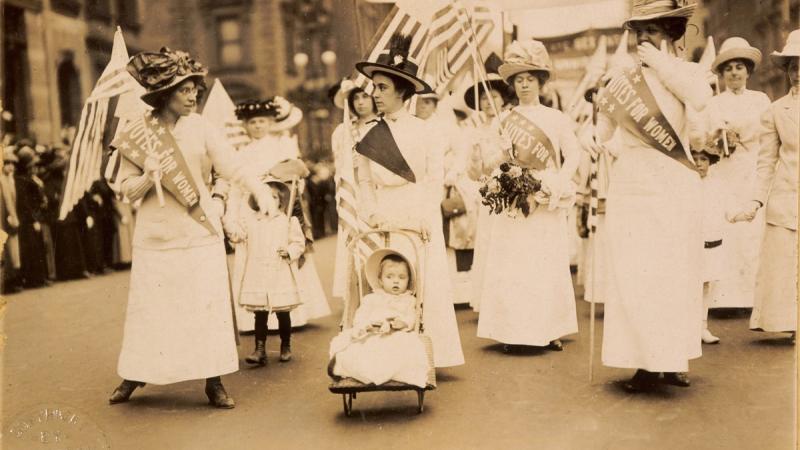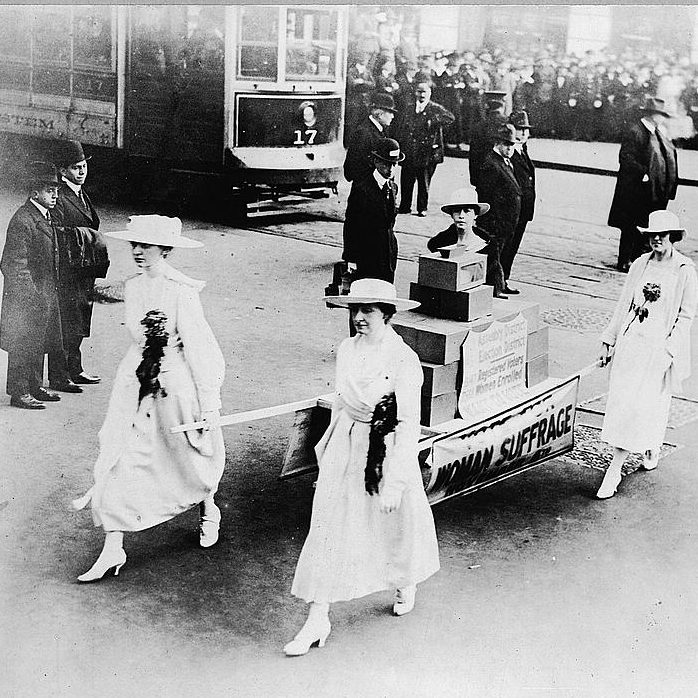
Health & Wellness
Women’s Equality Day

A Journey to the 19th Amendment: 1848 – 1920
1848 – The Seneca Falls Convention
In July 1848, in Seneca Falls, New York, the Seneca Falls Convention was the first women’s rights convention in the United States. The meeting launched the women’s suffrage movement with 300 attendees, including organizers Elizabeth Cady Stanton and Lucretia Mott. Sixty-eight women and 32 men (including Frederick Douglass) signed the Declaration of Sentiments, outlining the rights of American women.
1851 – The Speech
Sojourner Truth appears at the Women’s Rights Convention in Akron, Ohio, and delivers her seminal speech “Ain’t I a Woman,” now recognized as one of the most famous abolitionists and women’s rights speeches in American history.
1866 – American Equal Rights Association
Elizabeth Cady Stanton and Susan B. Anthony form the American Equal Rights Association, an organization dedicated to the goal of suffrage for all regardless of gender or race.
1869 – The Formation
After the split within the women’s suffrage movement, Elizabeth Cady Stanton and Susan B. Anthony are among those who established the National Woman Suffrage Association, while Lucy Stone and Julia Ward Howe helped form the American Woman Suffrage Association. 
1872 – Susan B. Anthony
One of several women in Rochester, New York, to vote in the presidential election, Susan B. Anthony was arrested and charged with voting illegally. A federal court heard her case and issued their decision in 1873 to convict and fine her. The other women who voted were arrested but not charged. The election inspectors who allowed the women to vote are arrested and found guilty. Jailed after refusing to pay their fines, President Ulysses S. Grant eventually pardons the inspectors.
1890 – National American Woman Suffrage Association
The National Women Suffrage Association and American Women Suffrage Association merged, forming the National American Women Suffrage Association (NAWSA). The NAWSA worked to bring women the right to vote in individual states instead of through the federal government.
1913 – Woman Suffrage Parade 
The Woman Suffrage Parade, in 1913, was the first suffragist parade in Washington, D.C. It was also the first large, organized march on Washington for political purposes. Suffragists Alice Paul and Lucy Burns held the procession for the National American Woman Suffrage Association.
1917 – The National Woman’s Party
The National Woman’s Party organizes “Silent Sentinel” pickets outside the White House, the first time protesters picket the White House. Beside them, in an urn, burns their Watchfire for Freedom. They are holding a protest banner calling out President Wilson on his lack of support for women’s voting rights.
1918 – President Woodrow Wilson
President Woodrow Wilson gives a speech promoting the United States as a beacon of democracy. He urges Congress to support woman suffrage as a war measure.
1919 – The 19th Amendment is Passed
Fifty-two years after the introduction of the first Amendment legalizing voting for women, the U.S. Congress passed the 19th Amendment initiating a campaign for ratification.
1920 – Winning the Vote at Last
Congress signs the 19th Amendment into law, which granted American women the right to vote, a right known as women’s suffrage.
Women’s Equality Day
On August 26, we will celebrate Women’s Equality Day and mark the Centennial of the enactment of the 19th Amendment, which said, among other things, that “the right of citizens of the United States to vote shall not be denied or abridged by the United States or by any State on account of sex”. This historic event was the culmination of the decades-long struggle of courageous suffragists determined to shape the course of our Republic. On Women’s Equality Day, we commemorate the efforts of those groundbreaking activists, celebrate the remarkable achievements of women, and reaffirm our commitment to equality under the law.
Although the 19th Amendment was ratified on August 18th, 1920, it was not until its certification by proclamation – meaning that it had been ratified by a two-thirds majority of states – a week later, on August 26, that it was officially enacted. Women’s Equality Day reminds us of the hurdles overcome by the heroic women who faced violence and discrimination in their efforts to continuously advance the Women’s Movement.
Despite the fact that the right to vote, the cornerstone of democracy, belongs to all citizens, this right was not originally afforded to women. In the early 19th century, American women, who generally could not inherit property and made half of a man’s wages in any available jobs, began organizing to demand political rights and representation.
The Women’s Suffrage movement was successful because a broad and diverse group of women and men worked together to promote change. They demanded that rules written by men and for men be reformed to include women. Women’s rights’ groups pointed out the hypocrisy of fighting for democracy in Europe while denying it to half of the American citizenry.
Changing the Constitution was a lengthy and complicated struggle and began in 1848 with the first Women’s Rights Convention in Seneca Falls, New York. The Seneca Falls Convention had more than 300 attendees, including organizers Elizabeth Cady Stanton and Lucretia Mott. The meeting launched the Women’s Suffrage Movement, and it was where the rights of American women were outlined in the Declaration of Sentiments and signed by 68 women and 32 men, including Frederick Douglass.
Even though the 19th Amendment was ratified in 1920, many women of color were unable to exercise their right to vote. Though these women rallied alongside white suffragists, many women of color remained disenfranchised until the mid-20th century: Native American women (1924); Chinese American women (1943); and Japanese and other Asian American women (1952). As late as 1962, some states still prevented women of color from voting on contrived grounds, such as literacy tests, poll taxes, voting ID requirements, intimidation, and claims regarding the legitimacy of residence were all obstacles. It was not until the passage of the Voting Rights Act of 1965, 45 years after the enactment of the 19th Amendment, that Black women were able to exercise this right without restrictions.
The struggle for Women’s Suffrage was only the first step toward equality for women. Even though women have made great strides towards equity, diversity, and full inclusion the fight for equal pay continues. While women are paid less than men, women of color are often paid even less. Yet, in virtually every sector of our society, women are significant contributors to enriching life experiences in the United States. Their resolve, innovation, leadership, passion, and compassion have changed the world and continue to inspire future generations of women.

National Chocolate Chip Cookie Day
August 4, 2024
Ingredients 
- 3/4 cup salted butter, softened
- 1/2 cup brown sugar
- 1/2 cup granulated sugar
- 1 egg
- 1 tbsp vanilla extract
- 2 cups all-purpose flour
- 1 tsp baking soda
- 1/2 tsp salt
- 1 cup favorite chocolate chips
Instructions
-
Preheat the oven to 350° F.
-
In the bowl of a stand mixer or with an electric hand mixer, cream together the butter, granulated sugar and brown sugar until light in color and fluffy in texture.
-
Scrape the sides of the bowl and add in the egg and vanilla extract. Mix until well combined.
-
Add in the flour, soda and salt. Mix until a soft but not sticky dough forms.
-
Fold in your favorite chocolate chips.
-
Scoop the dough out into 1 1/2 tbsp portions (a #40 cookie scoop works great here) and arrange on your cookie sheet. Can use parchment paper, a silicone mat or an uncreased cookie sheet.
-
Bake at 350° F for 8-10 minutes or until the cookies have spread and are just beginning to turn golden brown on the edges.
-
Allow the cookies to cool on the pan for 5 minutes before transferring to a wire cooling rack.

| Prep Time | Cook Time | Servings | Calories |
| 15 minutes |
10 minutes |
30 |
47 |
